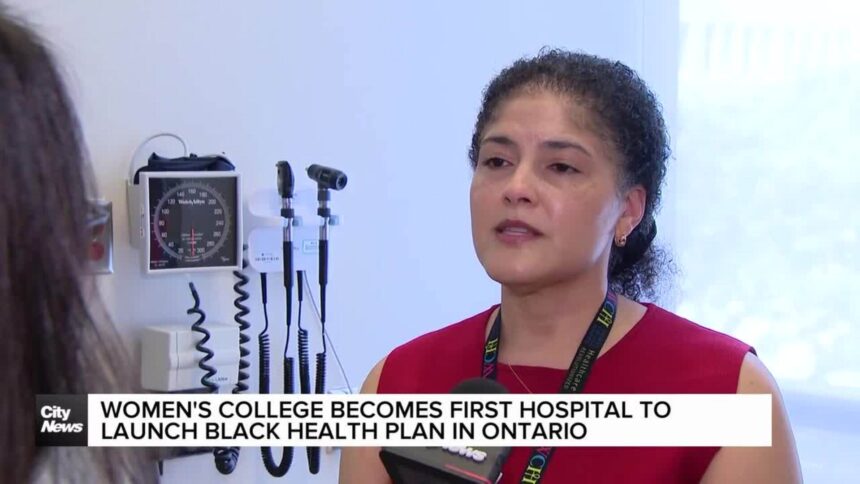I stepped through the sliding doors of Toronto General Hospital on a cloudy Tuesday morning, joining a small gathering of healthcare professionals, community advocates, and patients assembled in the hospital’s atrium. The occasion marked a significant shift in how one of Canada’s largest healthcare institutions addresses racial health disparities.
“We’ve known for decades that Black Canadians face unique health challenges,” Dr. Nadine Parker told me, her voice steady but passionate as we spoke near a newly unveiled information booth. “This isn’t just about cultural sensitivity—it’s about survival.”
The hospital’s Black Health Plan, launched this week, represents the first comprehensive initiative of its kind in Ontario. The program aims to address systemic barriers that have historically led to poorer health outcomes for Black patients across the province.
The statistics driving this initiative are sobering. According to Health Canada data, Black Canadians are 20% more likely to report poor or fair health compared to white Canadians. They also face higher rates of chronic conditions like hypertension and diabetes, while often experiencing delayed diagnoses for serious illnesses.
Marcus Johnson, a 58-year-old patient who participated in the pilot program, shared his experience with me as attendees mingled around us. “For the first time, I didn’t have to explain myself or my symptoms three different ways,” he said. “My doctor understood that sickle cell disease presents differently in people of my background. That understanding probably saved my life.”
The initiative emerged from a three-year collaborative effort between hospital leadership, Black health researchers from the University of Toronto, and community organizations like Black Health Alliance. The plan introduces several key components: specialized training for healthcare providers on Black health issues, targeted screening protocols for conditions more prevalent in Black populations, and community outreach programs in predominantly Black neighborhoods.
“This isn’t about separating care—it’s about recognizing that equity sometimes requires different approaches,” explained Dr. Amina Wilson, the hospital’s newly appointed Director of Equitable Health Initiatives. She guided me through the program’s resource center, pointing out culturally relevant health materials and a digital scheduling system designed to connect patients with Black healthcare providers when requested.
The program also addresses less visible barriers. A 2023 study published in the Canadian Medical Association Journal found that implicit bias among healthcare providers contributes significantly to disparities in pain management and treatment recommendations for Black patients. The hospital’s new training program directly confronts these biases through evidence-based workshops and continuing education requirements.
Community response has been predominantly positive, though not without concerns. Some healthcare professionals have questioned whether specialized programs might inadvertently reinforce divisions rather than address underlying systemic issues.
“We hear those concerns,” said Ontario Health Minister David Thompson at the launch event. “But we can’t ignore the reality that our one-size-fits-all approach has failed too many communities. This is about tailoring our excellent healthcare system to meet everyone’s needs.”
The initiative comes amid growing recognition of racial health disparities across Canada. Data from Statistics Canada shows that racialized Canadians were disproportionately affected by COVID-19, highlighting how systemic inequities manifest during health crises. Several other hospitals in Montreal and Vancouver are now developing similar programs, though Toronto General is the first major institution to implement a comprehensive approach.
Walking through the hospital’s halls after the formal presentations, I spoke with nurses and administrators about the practical challenges of implementation. Many expressed optimism tempered with realism about the road ahead.
“Changing institutional culture takes time,” admitted Sarah Okafor, a nurse educator who helped develop the training materials. “But I’ve already seen differences in how my colleagues approach certain conversations. Sometimes it’s the small changes that matter most—asking different questions, listening more carefully.”
The program’s funding represents another notable aspect of the initiative. Rather than creating a separate budgetary silo, hospital administrators have integrated equity considerations across departmental budgets, reflecting a commitment to sustainable change rather than a temporary project.
For community advocate Tamika Williams, who has spent fifteen years pushing for healthcare reform, the launch brings cautious hope. “We’ve seen promises before,” she told me as we stood near a wall displaying photographs of diverse medical teams. “What makes this different is the accountability structure. We have community members on the oversight committee and clear metrics for success.”
Those metrics include patient satisfaction scores, health outcome measurements for specific conditions like hypertension and maternal health, and staff competency assessments. The hospital has committed to publishing annual progress reports and adjusting the program based on results.
As I left the hospital that afternoon, I watched families entering the building—some looking confident, others apprehensive. Healthcare institutions remain intimidating places for many, especially those who have experienced discrimination within their walls. Whether this initiative truly transforms that experience for Black Ontarians will depend not just on policies and programs, but on the thousands of human interactions that happen daily throughout the healthcare system.
The Toronto program may represent just one hospital in one city, but it signals a broader awakening to the reality that true healthcare equity requires more than good intentions—it demands specific, measurable actions that address historical and ongoing disparities. For patients like Marcus Johnson, that recognition couldn’t come soon enough.






